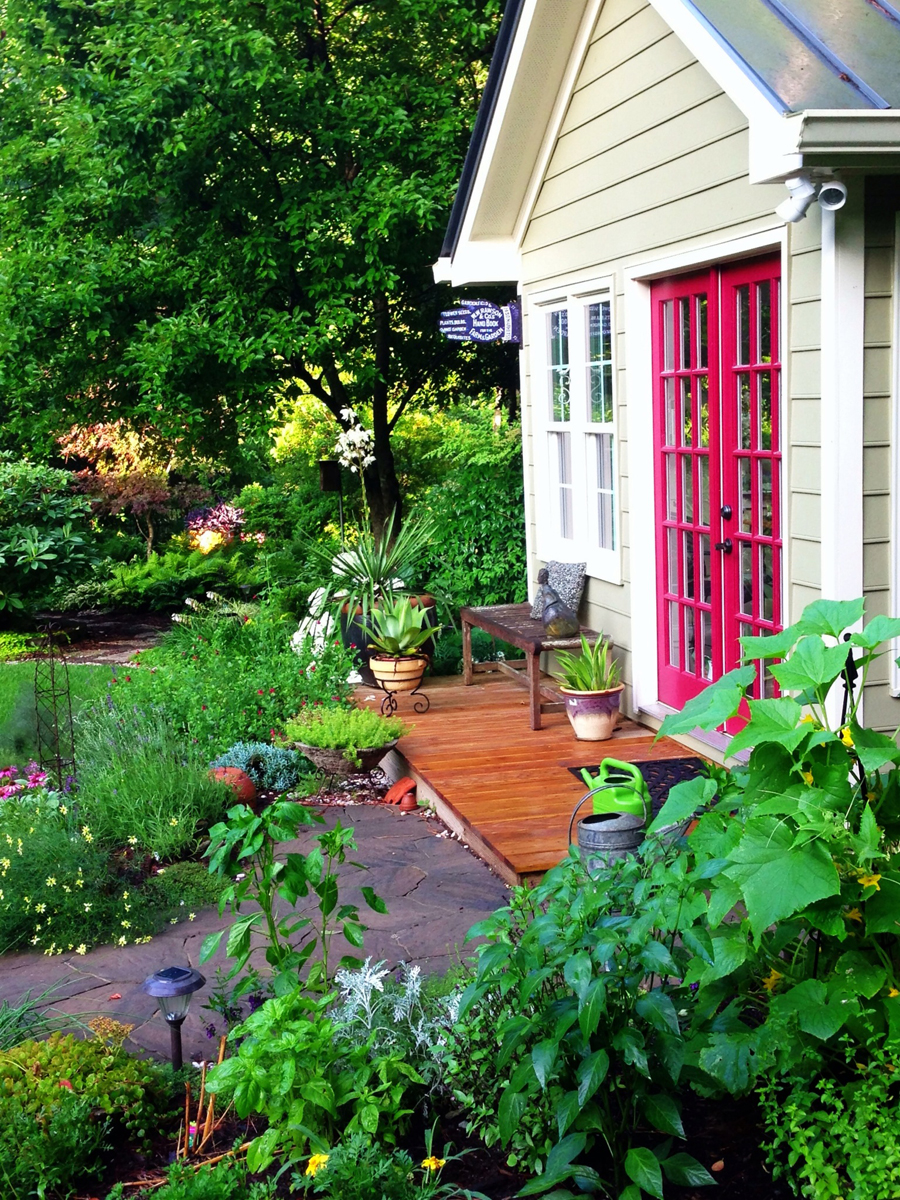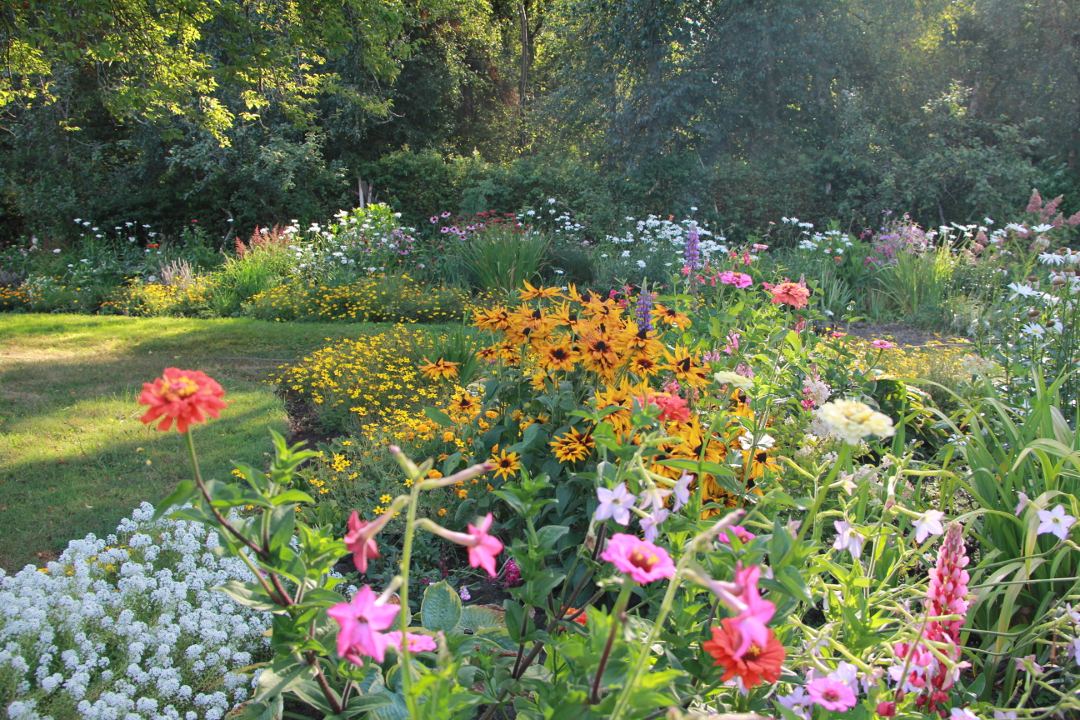
If you want your cottage garden to be truly traditional, you might be surprised to know that up until the 19th century, many cottage gardens boasted little more than potatoes. Nostalgia inspires our image of a typical cottage garden as being beautiful and timeless, but it was also functional. One can’t forget that country homes, especially if they were some way from a town or market, were often required to be self-sufficient.
1. A low fence or stone wall often encloses the garden and is a vehicle for plantings

Fences were a given for any cottage garden, and they played a practical role aside from providing structure for plants. Their main purpose was, of course, to keep animals and rodents away from the vegetables. Yards around the cottage were also fenced to keep chickens and other domestic animals in and the predators out. Today the fence still serves this purpose, but its role has been expanded. A low stone wall or picket fence offers a backdrop to flowering garden beds and supports climbing plants.
2. Berry and vegetable plants, as well as fruit trees, reflect an emphasis on self-sufficiency

When you seek to recreate a traditional cottage garden, incorporating vegetables, berries, and fruit trees is par for the course. From there, add in herbs and fragrant flowers. These plants were picked for their usefulness in addition to their aesthetic value.
3. Common flowering plants, especially fragrant ones, grow in profusion

Fragrant plants were useful for covering barnyard odors as well as for cooking and making herbal remedies. Sage, lavender, thyme, catmint, and others were typical of a cottage garden. Flowers were included to attract bees and other pollinators, to secure the health of the garden, and to ensure a fruitful season. As cottage gardens evolved—and people began using them less for growing their own food and medicines—so did the look.
4. Abundant and rambling plants grow right up to the house or other structures

The cottage garden’s signature rambling design was expanded upon. This charming effect was, at least to some extent, an accidental side-effect. Our overworked forebears allowed plants to go to seed and vines to stretch, and the garden naturally grew to overflowing. Plants that characteristically fit into the rambling milieu were adopted into the English garden. Roses were prized for their scent and beauty. Self-sowers and perennials abounded.
5. Self-sowers are encouraged

A new generation of plants was adopted as pivotal to the cottage garden look. Roses, foxglove, clematis, violets, daisies, and many others began to be associated with the cottage garden. These plants make up the cottage garden as we know it today.
All together, these elements work together to create the “classic” garden of a country cottage that lives in our memories and hearts. With a little elbow grease, plants, sunshine, and time, you can create your very own version of a cottage garden wherever you call home.
More cottage garden inspiration
Defining the New American Cottage Garden


















Comments
Log in or create an account to post a comment.
Sign up Log in